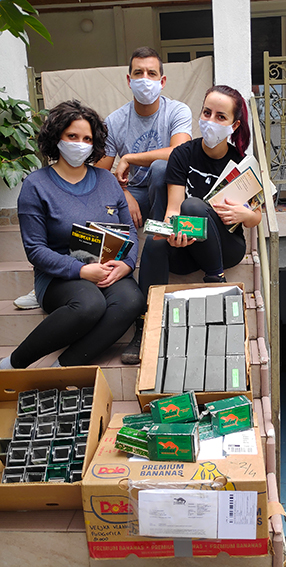 Wildlife Montenegro received 50 Longworth live traps from the Dutch Mammal Society for their research on the distribution of small mammals in Montenegro. Situated in the Balkan, Montenegro hosts a large number of mammal species. The Balkan is one of Europe’s biodiversity hotspots. Of the 270 mammal species in Europe, about 100 live here. However, where the mammals live exactly, how large their population numbers are, and what their conservation status is, is unknown. Wildlife Montenegro is a small organisation trying to answer these questions. Especially, the situation of the small mammals in Montenegro is unknown but conducting research on small mammals is not easy. The animals are elusive and most of them are only active during the night. With special equipment, it is possible to learn more about their ecology. However, this equipment is pretty expensive and for small organisations as Wildlife Montenegro difficult to acquire. Together with the Dutch Mammal Society, The Habitat Foundation started a campaign to provide researchers in Balkan countries with research material. Earlier, the Dutch Mammal Society donated live traps to researchers in Macedonia, Bosnia & Herzegovina, and Bulgaria. Regelink Ecology & Landscape and Cameraval.eu donated bat detectors and wildlife cameras to researchers in Bosnia & Herzegovina.
Wildlife Montenegro received 50 Longworth live traps from the Dutch Mammal Society for their research on the distribution of small mammals in Montenegro. Situated in the Balkan, Montenegro hosts a large number of mammal species. The Balkan is one of Europe’s biodiversity hotspots. Of the 270 mammal species in Europe, about 100 live here. However, where the mammals live exactly, how large their population numbers are, and what their conservation status is, is unknown. Wildlife Montenegro is a small organisation trying to answer these questions. Especially, the situation of the small mammals in Montenegro is unknown but conducting research on small mammals is not easy. The animals are elusive and most of them are only active during the night. With special equipment, it is possible to learn more about their ecology. However, this equipment is pretty expensive and for small organisations as Wildlife Montenegro difficult to acquire. Together with the Dutch Mammal Society, The Habitat Foundation started a campaign to provide researchers in Balkan countries with research material. Earlier, the Dutch Mammal Society donated live traps to researchers in Macedonia, Bosnia & Herzegovina, and Bulgaria. Regelink Ecology & Landscape and Cameraval.eu donated bat detectors and wildlife cameras to researchers in Bosnia & Herzegovina.
Information about the whereabouts of mammals and about their behaviour and habitat requirements is essential for their conservation. Do you also want to help the mammal researchers and conservationists in Eastern Europe with a donation (in money or equipment), contact us (info@thehabitatfoundation.org), or click the ‘Donate’-button. The equipment we are looking for is bat detectors, wildlife cameras, handheld GPS, live traps, mist nets, binoculars etc..
Besides learning more about the ecology of small mammals, the data collected with this equipment will be used for the second edition of the Atlas of European Mammals.






